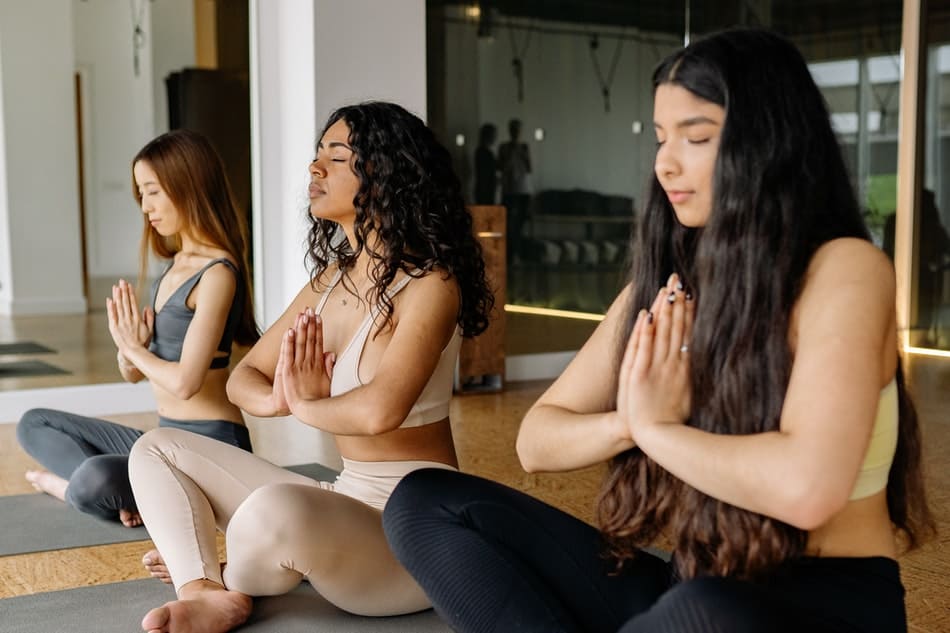What are the 8 limbs of Ashtanga yoga? The 8 limbs of Ashtanga yoga are a series of guidelines that help you live a meaningful life. In this article, I will explore each of these guidelines in-depth and learn how they can help us achieve inner peace and happiness.
The eight limbs of Ashtanga Yoga are yama , niyama , asana, pranayama, pratyahara , dharana, dhyana and samadhi. All of these limbs are beneficial to yoga practice. They can help you find the peace you want from Yoga
Why You Should Do Ashtanga Yoga
If you’re looking for a yoga practice that will challenge you both physically and mentally, Ashtanga yoga is a great option. Here are four reasons why you should give it a try:
- First of all, Ashtanga yoga is a very physically demanding form of yoga. If you’re looking to build strength and improve your flexibility, this is the practice for you.
- Second, Ashtanga yoga is also quite mentally challenging. The fixed sequence of poses can be difficult to memorize, and the fast-paced nature of the practice can be daunting for some. However, if you’re up for a challenge, Ashtanga can be extremely rewarding.
- Third, practicing Ashtanga regularly can help to improve your concentration and focus. The fixed sequence of poses encourages you to be present at the moment, and the breath-led movements help to quiet the mind.
- Finally, Ashtanga yoga is a great way to connect with other people. Because the practice is so physically demanding, it’s often practiced in a group setting, which can provide a sense of community and support.

What Are The 8 Limbs Of Ashtanga Yoga?
The eight limbs of Ashtanga Yoga are yama, niyama, asana, pranayama, pratyahara, dharana, dhyana, and samadhi.
Yama
Yama is the first limb of Ashtanga Yoga and it consists of five ethical restraints. They are ahimsa (non-violence), Satya (truthfulness), asteya (non-stealing), brahmacharya (chastity), and aparigraha (non-greediness).
Yama helps to create an inner environment that is conducive to yoga practice and self-transformation. It is important to remember that Yama is not just about following certain rules or guidelines, but rather it is about creating the right attitude or mindset.
Niyama
Niyama, the second limb of Ashtanga yoga, comprises five ethical practices: cleanliness (saucha), contentment (Santosa), austerity (tapas), self-study (svadhyaya), and surrender to God (Ishvara pranidhana). Let’s take a closer look at each one.
Saucha, or cleanliness, refers not only to physical cleanliness but also to mental purity. This means letting go of negative thoughts and emotions that cloud the mind and prevent us from seeing things. To purify the mind, we need to practice meditation and mindfulness.

Asana
In Ashtanga yoga, asana refers to the third and final limb of yoga. Asana is derived from the Sanskrit root word ‘as’, meaning to sit or be still. It is the practice of physical postures or poses that are designed to purify the body and calm the mind.
The purpose of asana is twofold: firstly, to tone and strengthen the body in preparation for meditation; and secondly, to develop self-discipline and mental concentration. The regular practice of asana can lead to improved health, increased energy levels, and a sense of well-being.
Pranayama
Pranayama is an integral part of Ashtanga yoga. It is a breathing technique that helps to control the breath and calm the mind. Pranayama is often used as a preparatory tool for meditation.
Pranayama is traditionally taught by a qualified teacher in a one-on-one setting. However, there are many resources available online and in books that can help you learn this important practice.
When practicing pranayama, it is important to be comfortable and relaxed. Make sure you are in a quiet place where you will not be disturbed. Sit with your spine straight and close your eyes.
Dharana
Dharana, the sixth limb of Ashtanga Yoga, is the practice of single-pointed concentration. In Dharana, the yogi focuses his or her attention on one object and sustains that focus for some time. The object of concentration can be anything from the breath to a mantra to a physical object.
The practice of Dharana develops mental discipline and concentration, which leads to greater clarity of thought and peace of mind. When the mind is focused on one thing, it becomes still and calms. This inner tranquility is necessary for effective meditation (dhyana).
So often our minds are darting around from one thing to another like a butterfly flitting from flower to flower. Dharana training helps us to learn how to focus the mind on one thing and hold that focus for some time. This is not an easy task! It takes practice and patience. But with regular Dharana practice, we can develop the mental discipline necessary to still the mind and experience inner peace.
Dhyana
Dhyana is the seventh limb of Ashtanga Yoga, and it is considered to be the most important. In Sanskrit, the word “dhyana” means “meditation.” Dhyana is a state of complete concentration and absorption in the object of meditation. In this state, the mind is completely still and free from all thoughts and distractions.
The goal of dhyana is to achieve a state of inner peace and tranquility. When the mind is completely at peace, it becomes one with the object of meditation, and this results in a deep level of understanding and insight.
Many different techniques can be used to reach the state of dhyana. The most important thing is to find a method that works for you and that you can stick with. If you are new to meditation, it is best to start with a simple technique such as focusing on your breath. Once you have mastered this, you can move on to more advanced techniques.
Samadhi
Samadhi is the eighth limb and it refers to absorption or ecstasy. This is the state of complete union with God or pure consciousness. Samadhi can only be attained after mastering the previous seven limbs. Ashtanga Yoga is often referred to as “the eight-limbed path” because each limb leads directly into the next one.
Final Words
The eight limbs of Ashtanga yoga are, in essence, a guide to living a meaningful and purposeful life. When practiced correctly and with regularity, they can lead to physical, mental, and emotional well-being. The bottom line is that the eight limbs of Ashtanga yoga provide a comprehensive system for living a healthy and fulfilling life. Thanks for reading! Namaste.
Related Articles

